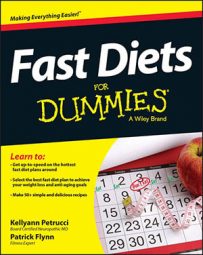Fasting along with exercise during your fasting state can also help your body put on muscle. The human body has a special protein called mammalian target of rapamycin (mTOR for short). Many experts now refer to it as the muscle-building gene, because recent research shows that it regulates the construction and rejuvenation of muscle tissue.
When mTOR is activated, it triggers muscle hypertrophy (an increase in muscle size) through an increase in protein synthesis (how your body turns protein into muscle tissue). Basically when mTOR is on, it helps you build muscle.
But you can go overboard. If mTOR is on too much, it loses its potency, can become hyperactive, and bad things can start to happen (overactive mTOR activity has been linked to irregular cell growth and various forms of cancer).
Two things can activate mTOR:
The hormone insulin: The pancreas secretes insulin. Because insulin is a blood sugar regulator, it's released whenever you eat and serves to shuttle nutrients into cells.
Too much insulin (chronically elevated levels of insulin) is a deleterious dilemma and may lead to a host of malaises, not limited to, but including
Alzheimer's disease
Diabetes
Heart disease
Insulin resistance
Various forms of cancer
Intense exercise: Intense exercise actually activates mTOR by first suppressing it. When you begin to exercise, mTOR is inhibited, suppressed like a spring. After you finish exercising, mTOR is super-sensitive, holding massive muscle-building potential. It's ready to be released as soon as you consume food.
In order to increase mTOR's muscle-making potential, you must first suppress it. And you suppress it by not eating. That way, when you do unleash it — either through eating, exercise, or a combination of the two — the effects are amplified.
If insulin is chronically elevated, you can grow quite insensitive to its effects — even to the point of developing diabetes. And because insulin activates mTOR, you can also lose your ability to gain muscle efficiently through chronically elevated levels of insulin.
You can call this the perpetual cycle of doom: The more you eat, the more insulin you produce and the less sensitive you become to it. The less sensitive you become to insulin, the more you need to get the same job done and the more insulin you produce.
And the more insulin you produce. . .you get the point. So you can then deduce that if your aim is to build muscle, then eating more isn't the best long-term solution.
You can never turn off insulin, but you can turn it down. Fasting is one of the best ways, if not the best way, to balance your insulin levels. If you control your insulin levels and bring them down to a more balanced level, you can become more sensitive to its effects. That is, you'll need less insulin to get the job done, which can help you build muscle more efficiently.
In order to control your insulin levels, you can try some of the various diets available, such as the Paleo Diet and the Mediterranean Diet. And although eating healthily is very important, the best thing you can do to balance your insulin levels is to not eat at all. Once again, fasting prevails.

